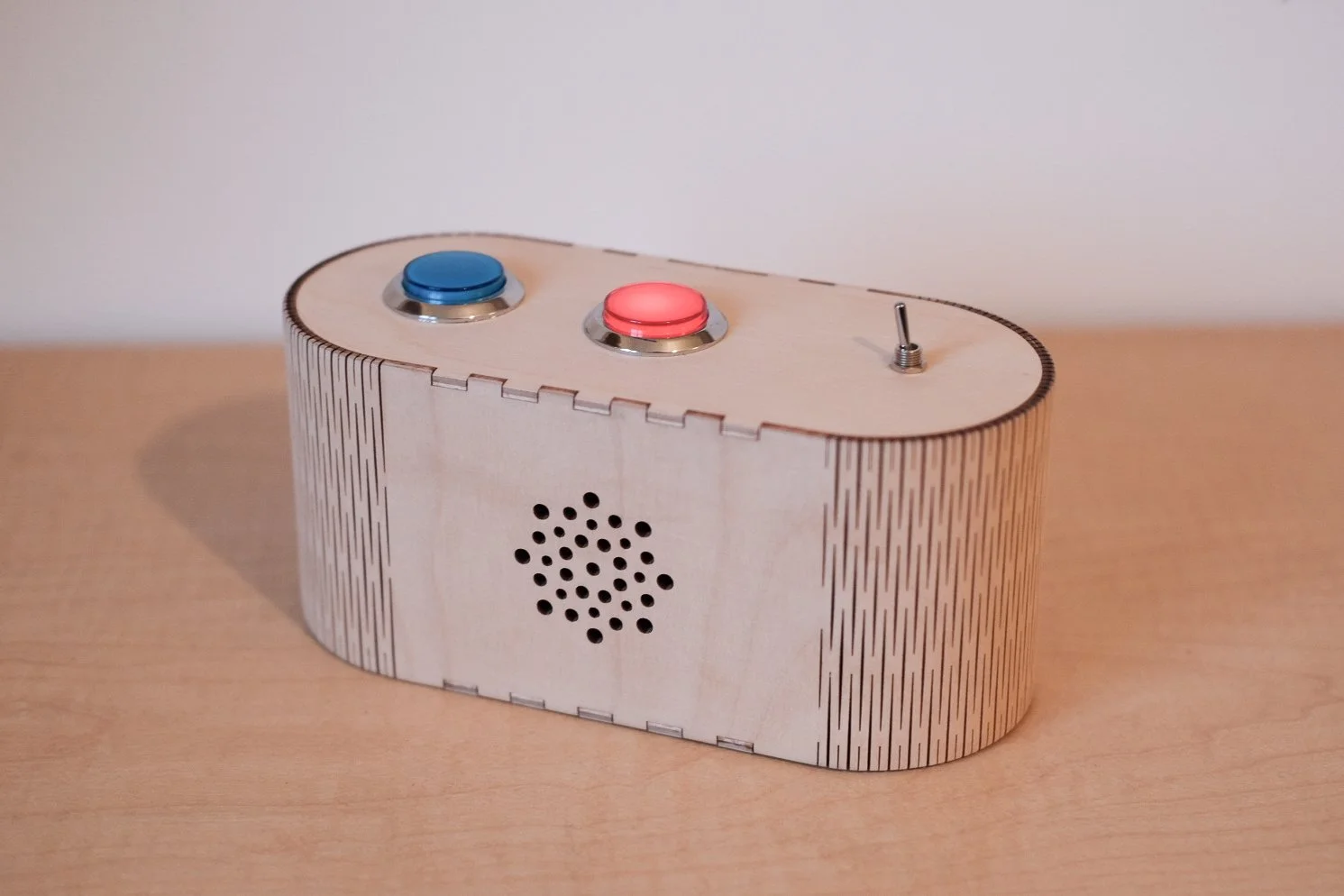Sonic Objects & Musical Toys
During Covid, I began spending time building small electronic objects using very simple circuits. Most of them are just simple circuits that make sound or light. Some of them take an hour and some of them take a week. In hindsight, these experiments help to focus my attention on learning new things about electronics and fabrication. I try sculptural ideas, play with different materials, work with sound and movement, and learn new electronic circuits and techniques. These objects often become gifts, or the beginning of a larger project. I include them here because, more than anything else, this is my research and practice. This is what I do everyday, and these are the experiments from which most of my other projects emerge. I don’t document them very often or very well, but when I do I’ll put them up here. I used 48 of my sonic objects in the installation Wax Magnets. I’ll send you the diagrams and files if I still have them.
hexamatic sampler
The Hexamatic is a sound sampler built using a simple ic chip developed for answering machines in the 90s. I added some components that let you change the speed of the timer (slo mo / chipmunk knob) and buttons that let you record, playback, and loop the sound. The microphone is built right into the panel, as is the speaker. They run on 2 AAA batteries and can run on solar power, extra glitchy. Hexagonal Prismatics are simple to use and fun on their own, but together they form a hexamatic honeycomb of mistimed lofi loops, also fun. I used a 14-cell honeycomb as a discussion system for a session of Interactive Art. I like how a simple system can lead to interesting things, especially when multiplied.
sound mover
I used the same chip as the Hexamatic in a simplified form (without time/pitch control) to make Sound Movers, designed for small kids. They have an on/off switch and two big glowing buttons. When you press red it records and when you press blue it plays back. There is no saving sounds, only moving them.
midi tricorder
The midi tricorder is a small midi interface designed to introduce a few types of sensors (button, toggle, knob, light sensor) and an actuator (an led) in a simple way, but with avenues for expansion. It connects to a computer as a plug-and-play MIDI or HID controller that you can use with lots of software programs. I developed a detailed tutorial, with code examples, design files, and critical resources about human-computer interfacing. Each Tricorder costs under $20 to make.



